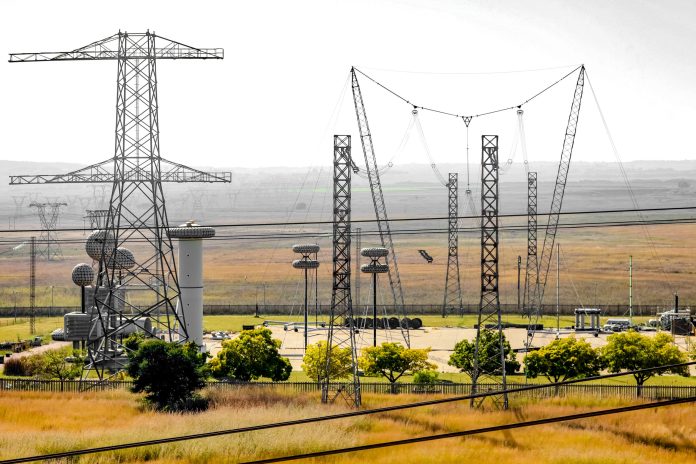Senegal’s national electricity company, Senelec, reportedly raised 120 billion CFA francs (about $215 million) through a debt securitization that merges green finance with sustainability-linked targets; a first for any public utility in Africa. The transaction, announced on October 1, 2025, marks a new chapter for West Africa’s energy financing landscape, blending environmental ambition with financial innovation to help the country expand access to affordable, cleaner power.
Structured by BOAD Titrisation, the deal, officially named FCTC Senelec 2025–2030, securitizes overdue electricity bills owed to Senelec by government departments, embassies, and large corporations. These receivables have been transferred to a dedicated fund, which in turn issues tradable bonds listed on the Bourse Régionale des Valeurs Mobilières (BRVM), the regional stock exchange of the West African Monetary Union.
Investors purchase the bonds, and the proceeds are channeled back to Senelec for infrastructure expansion and sustainability programmes.
Half of the proceeds, about 63 billion CFA francs, will finance renewable-energy, energy-efficiency, and carbon-reduction projects. The remaining portion is tied to sustainability performance indicators such as reductions in transmission losses and improvements in access to electricity. The financing costs will vary according to whether Senelec meets these measurable environmental and social targets.
The issuance is divided into several tranches maturing in 2030: senior bonds worth 83 billion CFA francs pay 8.15 percent interest, while mezzanine and junior tranches yield around 10 percent, some as zero-coupon instruments. Semi-annual repayments will continue until maturity.
By securitizing its receivables, Senelec transforms illiquid debts into immediate capital, strengthening liquidity and balance-sheet flexibility while avoiding further strain on the national budget.
Read also: Ethiopia’s Coffee exports surge by 47% as reforms and new trade deals fuel record growth
Senelec supplies electricity to about 80 percent of Senegal’s population, operating within a national plan to reach universal access by 2030. The company’s leadership described the securitization as “a crucial milestone in financing the energy transition,” aligning with Senegal’s goal of raising renewables to 40 percent of installed capacity by the end of the decade.
This initiative reflects a broader shift in how African utilities are mobilizing private capital for climate and infrastructure projects. Historically, power expansion across the continent relied heavily on concessional lending or sovereign guarantees. Market-based instruments such as green bonds and sustainability-linked bonds are changing that model, linking financing costs directly to environmental outcomes.
Comparable examples have emerged elsewhere on the continent. In 2022, South Africa’s Eskom issued its first R1.5 billion green bond to fund grid upgrades connecting renewable-energy projects; though smaller in relative terms, it helped restore investor confidence after years of financial distress. In 2023, Kenya’s KenGen raised KES 6.3 billion through a green bond to modernize hydroelectric and geothermal assets, an issuance that oversubscribed by more than 30 percent. Both transactions demonstrated that capital markets will reward credible, transparent sustainability commitments.
Senelec’s approach goes a step further by introducing securitization, packaging outstanding receivables rather than relying solely on new borrowing, giving the model added relevance for public entities with large unpaid bills.
Analysts across West Africa note that the deal also strengthens the regional financial market. The BRVM, which lists equities and debt from eight member countries, has sought to deepen liquidity and attract ESG-aligned investors. The Senelec bond’s dual certification as both a Green Bond and a Sustainability-Linked Bond represents a turning point, aligning local instruments with international environmental, social, and governance (ESG) standards. Investors gain access to diversified tranches with clear risk–return profiles, while Senelec and the state preserve fiscal space for essential services.
The senegalese government estimates it needs more than $3 billion over the next five years to upgrade grids, expand renewable capacity, and extend service to rural communities. Projects already underway include solar farms in Bokhol and Kael, wind installations in Taïba Ndiaye, and the scaling-up of liquefied natural gas (LNG) imports from new offshore fields. By channeling nearly half the bond’s proceeds into renewables and efficiency, Senelec is positioning itself to deliver tangible progress toward the national energy-mix target while strengthening financial resilience.
The move also reflects a growing pragmatism among African utilities. Debt securitization, once considered too complex for the region’s financial systems, is now emerging as a practical response to cash-flow pressures. It allows companies to convert outstanding receivables into capital without taking on new sovereign debt. This mechanism, if replicated, could ease liquidity challenges faced by utilities in Ghana, Côte d’Ivoire, and Nigeria, where accumulated arrears from public institutions often strain operations.
Read also: Kenya aims for global first with $500M sustainability-linked bond in March 2026
Senelec’s innovation arrives at a moment when regional electrification targets are accelerating. West Africa’s “Electricity for All” programme aims to connect an additional 800,000 households, raising rural access rates and supporting small-scale industries. The securitization’s timing, just days after the launch of the fund’s second phase, underlines how financial engineering is being matched with social objectives, ensuring that capital flows support both climate goals and inclusive development.
In comparison, countries that adopted similar financing tools have already recorded measurable outcomes. In Morocco, the issuance of sustainability-linked bonds by state agencies has financed solar plants and rural grid connections that reduced carbon emissions by over 500 000 tons annually. In Egypt, green bonds issued in 2020 helped fund transport and water projects and unlocked additional concessional lending from multilateral partners. These precedents suggest that Senegal’s model could yield not just liquidity but also reputational and developmental gains, attracting a broader pool of investors seeking credible ESG opportunities.
Engage with us on Linkedin: Africa Sustainability Matters






